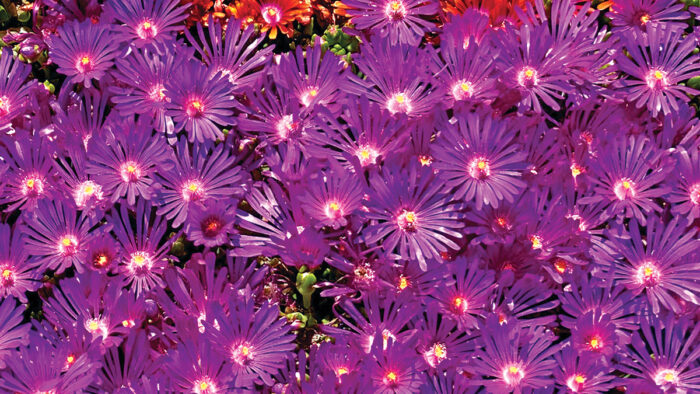
If you’ve run into a garden rut, we’ve got you covered. It’s time to start planning for your first trip to the local nursery or garden center. What plants will you need for a new garden area? Are you noticing a lack of excitement or color outside (we call this the mid-spring slump)? Just itching for an exciting new addition to a well-established bed? Now is the time to make a list of the perennials, shrubs, and/or trees that will fill those needs.
To help you make the best choices, we’ve asked regional garden experts to tell us what plants are on their spring shopping lists. These plants serve a range of purposes in the garden, but all are region-specific stars. From out-of-this-world flowers to show-stopping foliage and everything in between, discover fantastic plants that would be a welcome addition to any garden in the region.
Find great shopping-list plants for the Mountain West below, and check out this comprehensive collection of articles to discover more springtime planting and planning inspiration.
1. Lewis’ mock orange

Name: Philadelphus lewisii
Zones: 4–9
Size: 8 to 12 feet tall and 6 to 12 feet wide
Conditions: Full sun to partial shade; moist to average soil
Native range: Northwestern United States, California, southwestern Canada
Lewis’ mock orange, which grows throughout the mountain states, is Idaho’s state flower. Though often called “syringa,” it has no relation to lilacs (Syringa spp. and cvs., Zones 3–8). Wildly fragrant, the flowers smell like those of an orange tree. In May and June, bright white blossoms make this shrub easy to spot along streams and hillsides. It does well in almost any garden soil and is fairly deer resistant. Mock orange is typically a loose, vase-shaped shrub. Prune it immediately after it flowers by removing one-third to one-half of the canes to the ground. This encourages fullness for the next year. This shrub works best as an understory plant but can survive in full sun with supplemental watering.
2. Amber Jubilee™ ninebark

Name: Physocarpus opulifolius ‘Jefam’
Zones: 2–7
Size: 5 to 7 feet tall and 3 to 6 feet wide
Conditions: Full sun; well-drained soil
Native range: Eastern North America
This is quite the colorful nativar. Amber Jubilee™ is a deciduous shrub that can take anything the Mountain West climate can throw at it. The newly emerging foliage has an orange blush that matures to bronze, with yellow, gold, and lime-green highlights. In fall the leaves turn red and purplish. It’s wonderful to watch this plant morph through these stages as the season progresses. This color range also works beautifully with other plants. For a knockout combo, try underplanting it with a perennial featuring orange-red flowers, such as the Red Mountain® Flame ice plant (Delosperma ‘PWWG02S’, Zones 6–9), or pair it with ornamental grasses for added appeal. While this shrub prefers full sun, it will be fine with some afternoon shade in the hottest regions. Dry to medium soil with good drainage is key.
3. ‘Plum Dazzled’ sedum

Name: Hylotelephium ‘Plum Dazzled’
Zones: 4–9
Size: 8 to 10 inches tall and 16 to 18 inches wide
Conditions: Full sun; well-drained soil
Native range: Hybrid
One of the Sunsparkler® series of stonecrops, this plant adds zing to the hottest spots in the garden all season long. ‘Plum Dazzled’ emerges in spring with fleshy, plum-colored leaves and deep rose-colored stems. The foliage then deepens to a dark purple. Midseason, raspberry-pink, star-shaped flowers take center stage, blooming for up to two months. This perennial loves sandy, dry soil but tolerates gravelly soil as well. Upright sedums are low-maintenance plants that do great in our climate, since they are tolerant of extreme heat but are also cold-hardy; just be sure not to overwater these xeric beauties.
4. Table Mountain™ ice plant

Name: Delosperma cooperi ‘John Proffitt’
Zones: 4–9
Size: 1 to 3 inches tall and 16 to 20 inches wide
Conditions: Full sun to partial shade; well-drained soil
Native range: Hybrid
Table Mountain™ was my first ice plant, and it is still my favorite. This spreading ground cover has medium-green foliage and dazzling, fuchsia-colored flowers that you can’t miss. I like to use it at the edge of stone pathways where it will creep out of the edge of the border to catch people’s attention. This succulent has low water needs but requires excellent drainage, especially in winter. The evergreen foliage can take on a pretty purple tinge in cold weather. It’s super easy to propagate; simply break off a piece and stick the stem end into the ground to start a new plant.
Mary Ann Newcomer is a lifelong gardener based in Boise, Idaho, and the author of Rocky Mountain Gardener’s Handbook. She is also the Mountain West forum moderator for FineGardening.com.
Fine Gardening Recommended Products

DeWalt Variable-Speed Cordless Reciprocating Saw
Fine Gardening receives a commission for items purchased through links on this site, including Amazon Associates and other affiliate advertising programs.
- 18.31 x 6.13 x 4 inches
- 1-1/8-inch stroke length
- Variable speed trigger with 0-3000 spm

ARS Telescoping Long Reach Pruner
Fine Gardening receives a commission for items purchased through links on this site, including Amazon Associates and other affiliate advertising programs.

Pruning Simplified: A Step-by-Step Guide to 50 Popular Trees and Shrubs
Fine Gardening receives a commission for items purchased through links on this site, including Amazon Associates and other affiliate advertising programs.



















Comments
Log in or create an account to post a comment.
Sign up Log in